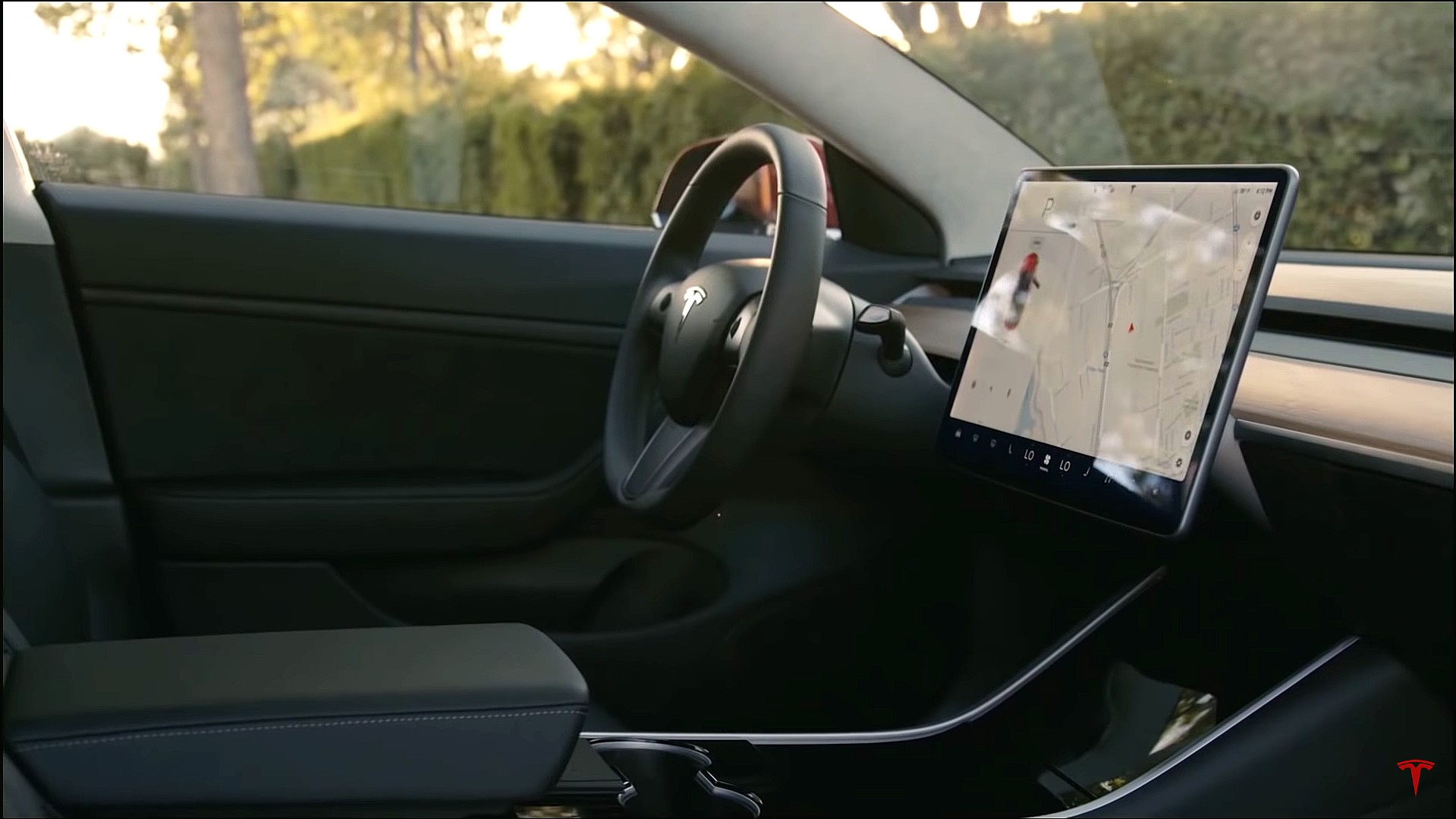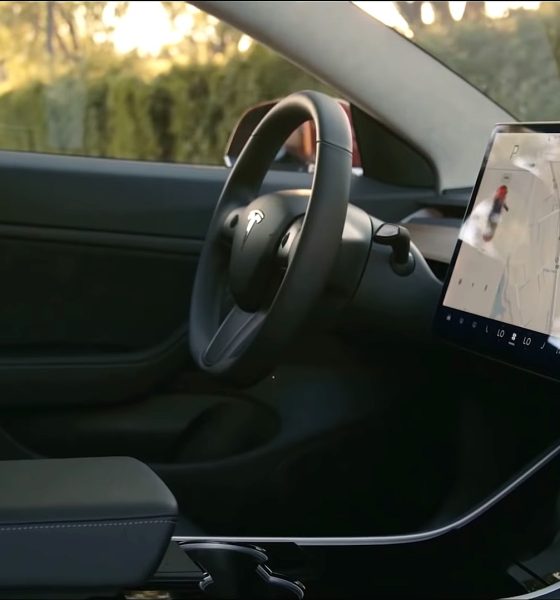

News
Tesla 2020.40.0.4: Speed Assist, Glovebox PIN, Priority Bluetooth, and more
Tesla’s new 2020.40.0.4 Software Update has been released to owners, and a variety of new features were added to make life easier for drivers. Speed Assist Improvements join new security functionalities, along with fresh accessibility features to make driving a Tesla safer and more luxurious.
While the electric automaker rolls out updates in a frequent fashion, this new software comes with multiple functionalities that are entirely new to drivers. Other updates could include one or two features that are simply improvements to already existing characteristics. However, 2020.40.0.4 includes multiple features that Tesla has not included in past updates.
Speed Assist Improvements
Tesla vehicles will now use the external cameras on the car to detect speed limit signs. This will help improve the accuracy of speed limit date for highways, but it will also help vehicles travel at appropriate speeds.
In the past, some owners have complained that their vehicles are not recognizing the speed limits in certain regions. California drivers were having relatively non-existent issues with the functionality, but drivers in other parts of the United States were reporting several issues with their cars traveling at the correctly intended speeds.
Tesla poised to roll out speed limit recognition and roundabout support worldwide
CEO Elon Musk responded that the issues were of “high priority,” and that Tesla was addressing them.
It appears that the functionality has been improved and fixed. The release notes state:
“In addition to local roads, Speed Assist now leverages your car’s cameras to detect speed limit signs to improve the accuracy of speed limit data for highways. As usual, to adjust Speed Assist settings, tap Controls > Autopilot > Speed Limit.”
Additionally, drivers with different Infotainment systems will have differing capabilities.
Notes for MCU2 drivers state:
“Speed Assist now leverages your car’s cameras to detect speed limit signs to improve the accuracy of speed limit data on local roads. Detected speed limit signs will be displayed in the driving visualization and used to set the associated Speed Limit Warning. As usual, to adjust Speed Assist settings, tap Controls > Autopilot > Speed Limit.”
MCU1 users will have slightly fewer capabilities, according to their notes, which say:
“Speed Assist now leverages your car’s cameras to detect speed limit signs to improve the accuracy of speed limit data on local roads. As usual, to adjust Speed Assist settings, tap Controls > Autopilot > Speed Limit.”
The functionality is availabel on all four currently released Tesla models and requires HW 3.0 to be used.
Priority Bluetooth Device
Tesla vehicles will now connect to one Bluetooth device that has been defined as the “priority device,” according to the new update. This will stop confusion between two owners whose phones or devices are both synced to the vehicle. One phone will be considered the “priority” device, and will automatically connect. It is available for all four vehicles.
“To avoid connecting to the wrong nearby phone, you can now set your priority Bluetooth device. Your car will attempt to connect to the priority device associated with the profile selected before it attempts to connect to other paired phones. To set your priority device, tap the Bluetooth icon on the top of your touchscreen, select your preferred phone and tap Priority Device.”
Mobile App – Vent Windows
This feature is pretty self-explanatory. It is only available for the Model S, however.
“You can now vent all of your windows from the Tesla mobile app.
Note: this feature requires the Tesla mobile app version 3.10.0 or later.”
Glovebox PIN
A great security addition for owners, the Glovebox will now be locked until a four-digit PIN number is entered. A glovebox is a great place for sensitive information like insurance or vehicle titles. Tesla adding this feature should give owners peace of mind. It is available on all four cars.
“Protect the valuables in your glovebox with a 4-digit PIN. Tap Controls > Safety & Security > Glovebox PIN on the touchscreen to create your PIN.”
Charge Port Inlet Heater
Model 3 and Model Y owners can enjoy a defrosted charge port thanks to an inlet heater that will remove any ice or snow from the inside of the mechanism. It can be turned on through the Tesla mobile app, so owners won’t have to go out into the cold weather to get things cleared up for when they need to charge.
“Your car can now use the charge port inlet heater to help defrost the inside of the charge port. The charge port inlet heater can be activated in cold ambient temperatures by enabling preconditioning using the mobile app, activating the rear defrost button on the vehicle’s touchscreen, or preconditioning the vehicle using scheduled departure.”
Full release notes are available here, thanks to TeslaScope.com.

Elon Musk
Starlink passes 9 million active customers just weeks after hitting 8 million
The milestone highlights the accelerating growth of Starlink, which has now been adding over 20,000 new users per day.

SpaceX’s Starlink satellite internet service has continued its rapid global expansion, surpassing 9 million active customers just weeks after crossing the 8 million mark.
The milestone highlights the accelerating growth of Starlink, which has now been adding over 20,000 new users per day.
9 million customers
In a post on X, SpaceX stated that Starlink now serves over 9 million active users across 155 countries, territories, and markets. The company reached 8 million customers in early November, meaning it added roughly 1 million subscribers in under seven weeks, or about 21,275 new users on average per day.
“Starlink is connecting more than 9M active customers with high-speed internet across 155 countries, territories, and many other markets,” Starlink wrote in a post on its official X account. SpaceX President Gwynne Shotwell also celebrated the milestone on X. “A huge thank you to all of our customers and congrats to the Starlink team for such an incredible product,” she wrote.
That growth rate reflects both rising demand for broadband in underserved regions and Starlink’s expanding satellite constellation, which now includes more than 9,000 low-Earth-orbit satellites designed to deliver high-speed, low-latency internet worldwide.
Starlink’s momentum
Starlink’s momentum has been building up. SpaceX reported 4.6 million Starlink customers in December 2024, followed by 7 million by August 2025, and 8 million customers in November. Independent data also suggests Starlink usage is rising sharply, with Cloudflare reporting that global web traffic from Starlink users more than doubled in 2025, as noted in an Insider report.
Starlink’s momentum is increasingly tied to SpaceX’s broader financial outlook. Elon Musk has said the satellite network is “by far” the company’s largest revenue driver, and reports suggest SpaceX may be positioning itself for an initial public offering as soon as next year, with valuations estimated as high as $1.5 trillion. Musk has also suggested in the past that Starlink could have its own IPO in the future.
News
NVIDIA Director of Robotics: Tesla FSD v14 is the first AI to pass the “Physical Turing Test”
After testing FSD v14, Fan stated that his experience with FSD felt magical at first, but it soon started to feel like a routine.

NVIDIA Director of Robotics Jim Fan has praised Tesla’s Full Self-Driving (Supervised) v14 as the first AI to pass what he described as a “Physical Turing Test.”
After testing FSD v14, Fan stated that his experience with FSD felt magical at first, but it soon started to feel like a routine. And just like smartphones today, removing it now would “actively hurt.”
Jim Fan’s hands-on FSD v14 impressions
Fan, a leading researcher in embodied AI who is currently solving Physical AI at NVIDIA and spearheading the company’s Project GR00T initiative, noted that he actually was late to the Tesla game. He was, however, one of the first to try out FSD v14.
“I was very late to own a Tesla but among the earliest to try out FSD v14. It’s perhaps the first time I experience an AI that passes the Physical Turing Test: after a long day at work, you press a button, lay back, and couldn’t tell if a neural net or a human drove you home,” Fan wrote in a post on X.
Fan added: “Despite knowing exactly how robot learning works, I still find it magical watching the steering wheel turn by itself. First it feels surreal, next it becomes routine. Then, like the smartphone, taking it away actively hurts. This is how humanity gets rewired and glued to god-like technologies.”
The Physical Turing Test
The original Turing Test was conceived by Alan Turing in 1950, and it was aimed at determining if a machine could exhibit behavior that is equivalent to or indistinguishable from a human. By focusing on text-based conversations, the original Turing Test set a high bar for natural language processing and machine learning.
This test has been passed by today’s large language models. However, the capability to converse in a humanlike manner is a completely different challenge from performing real-world problem-solving or physical interactions. Thus, Fan introduced the Physical Turing Test, which challenges AI systems to demonstrate intelligence through physical actions.
Based on Fan’s comments, Tesla has demonstrated these intelligent physical actions with FSD v14. Elon Musk agreed with the NVIDIA executive, stating in a post on X that with FSD v14, “you can sense the sentience maturing.” Musk also praised Tesla AI, calling it the best “real-world AI” today.
News
Tesla AI team burns the Christmas midnight oil by releasing FSD v14.2.2.1
The update was released just a day after FSD v14.2.2 started rolling out to customers.

Tesla is burning the midnight oil this Christmas, with the Tesla AI team quietly rolling out Full Self-Driving (Supervised) v14.2.2.1 just a day after FSD v14.2.2 started rolling out to customers.
Tesla owner shares insights on FSD v14.2.2.1
Longtime Tesla owner and FSD tester @BLKMDL3 shared some insights following several drives with FSD v14.2.2.1 in rainy Los Angeles conditions with standing water and faded lane lines. He reported zero steering hesitation or stutter, confident lane changes, and maneuvers executed with precision that evoked the performance of Tesla’s driverless Robotaxis in Austin.
Parking performance impressed, with most spots nailed perfectly, including tight, sharp turns, in single attempts without shaky steering. One minor offset happened only due to another vehicle that was parked over the line, which FSD accommodated by a few extra inches. In rain that typically erases road markings, FSD visualized lanes and turn lines better than humans, positioning itself flawlessly when entering new streets as well.
“Took it up a dark, wet, and twisty canyon road up and down the hill tonight and it went very well as to be expected. Stayed centered in the lane, kept speed well and gives a confidence inspiring steering feel where it handles these curvy roads better than the majority of human drivers,” the Tesla owner wrote in a post on X.
Tesla’s FSD v14.2.2 update
Just a day before FSD v14.2.2.1’s release, Tesla rolled out FSD v14.2.2, which was focused on smoother real-world performance, better obstacle awareness, and precise end-of-trip routing. According to the update’s release notes, FSD v14.2.2 upgrades the vision encoder neural network with higher resolution features, enhancing detection of emergency vehicles, road obstacles, and human gestures.
New Arrival Options also allowed users to select preferred drop-off styles, such as Parking Lot, Street, Driveway, Parking Garage, or Curbside, with the navigation pin automatically adjusting to the ideal spot. Other refinements include pulling over for emergency vehicles, real-time vision-based detours for blocked roads, improved gate and debris handling, and Speed Profiles for customized driving styles.








